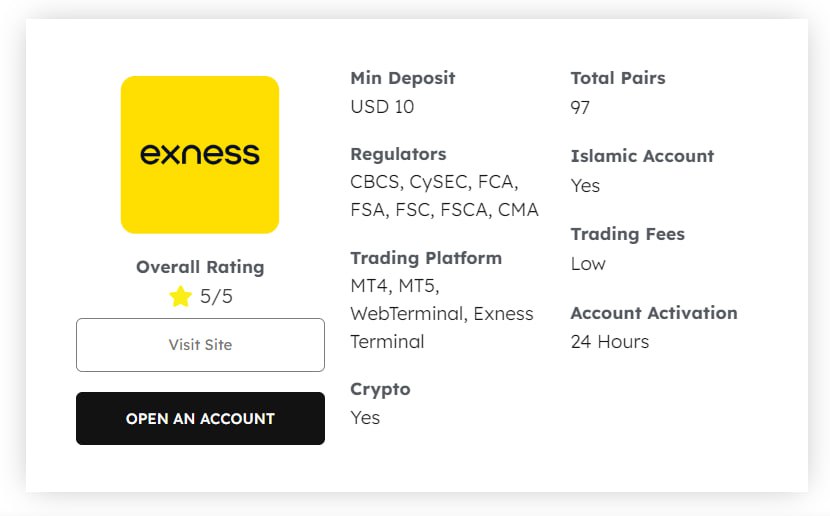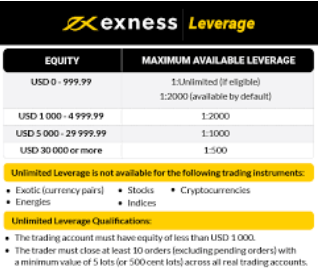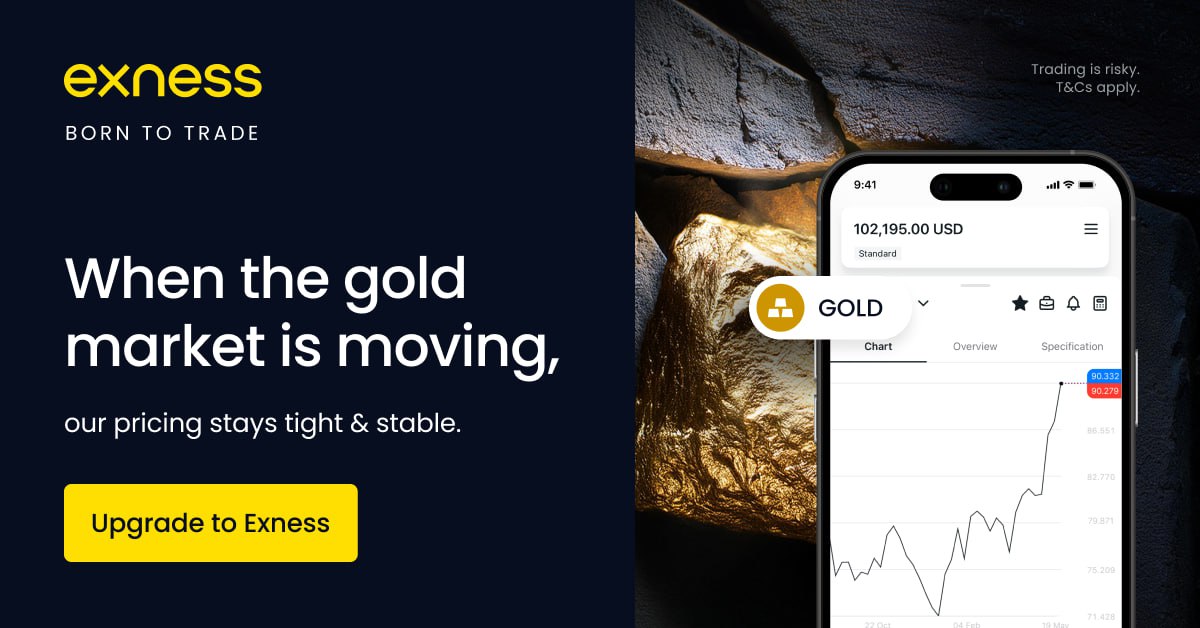
16 minute read
How to use leverage in Exness
Understanding how to use leverage in Exness can be the key to unlocking your potential as a trader. Leverage allows traders to control larger positions than their initial capital would typically allow, which can increase both profits and risks. In this article, we will explore various aspects of leverage within the Exness trading platform, helping you understand how to effectively use it to maximize your trading success.
👉 Visit Website Exness Official ✅
💥 QR Code Exness 👇

Understanding Leverage in Exness: A Beginner's Guide
Before diving deep into the intricacies of leverage, it's essential to grasp what it means, especially in the context of trading platforms like Exness. Leverage is essentially a loan provided by the broker to the trader, allowing them to open larger positions.
When engaging with leverage, traders must remember that while it can amplify profits, it can also amplify losses. This duality makes it crucial for traders to fully understand how leverage works before incorporating it into their trading strategies. In Exness, leverage can go up to 1:2000, depending on the account type, which offers significant opportunity but comes with responsibility.
The Role of Leverage in Trading
Leverage plays a pivotal role in trading, particularly in Forex, commodities, and other financial instruments. It allows traders to enhance their exposure to market movements without needing substantial capital. For instance, a trader with a margin of $1000 and leverage of 1:100 could control a position worth $100,000.
This ability to control larger sums means traders can realize greater profits from favorable market conditions. However, it also means that small adverse movements in the market can lead to significant losses. For this reason, understanding how leverage impacts trading outcomes is vital for anyone considering utilizing this tool on Exness.
👉 Visit Website Exness Official ✅
Importance of Education on Leverage
Education is perhaps the most crucial aspect of successfully using leverage. Many newcomers to trading may underestimate its complexity and the potential risks involved. Therefore, Exness provides various resources, including webinars, guides, and tutorials, to help traders familiarize themselves with leverage.
Moreover, seeking external educational materials, such as books on trading psychology and risk management, can significantly enhance one’s understanding of how to navigate the complexities of leverage in trading. Continuous learning remains the cornerstone of competent trading practices, especially when leveraging funds.
Leverage and Margin in Exness: Key Definitions and Concepts
To fully understand how to use leverage in Exness, it's important to know the difference between leverage and margin. While they are closely related, they serve distinct purposes within the realm of trading.
Margin refers to the amount of money required to open and maintain a leveraged position. Essentially, it acts as a good faith deposit, ensuring that the trader can cover any potential losses. On the other hand, leverage amplifies the purchasing power of the trader's capital.
Defining Margin Requirements
In Exness, margin requirements vary based on the account type and the specific instrument being traded. For instance, different currencies or commodities may have differing margin requirements, affecting the overall profitability of trades. Understanding these requirements is critical for effective leverage usage.
The formula used to calculate margin is relatively straightforward:
Margin = (Trade Size / Leverage)
This calculation highlights the relationship between the trade size, leverage, and the amount of margin needed. By grasping this concept, traders can better manage their accounts and ensure they have adequate funds to maintain their positions.
👉 Visit Website Exness Official ✅
How Leverage Affects Margin Calls
A margin call occurs when the equity in a trader's account falls below the required margin level. During times of heightened volatility, even minor fluctuations in price can trigger margin calls, leading to forced liquidation of positions.
Understanding how leverage affects potential margin calls is crucial for managing risk. With higher leverage, the margin requirement is lower, which may seem advantageous at first glance. However, it increases the likelihood of encountering margin calls during unfavorable market movements, highlighting the necessity of prudent risk management practices.
The Relationship Between Leverage and Risk
The interplay between leverage and risk cannot be overstated. Increased leverage can lead to amplified gains, but it can also pose substantial risks if not managed carefully.
For example, if a trader uses high leverage to enter a position, even a small adverse movement can result in significant losses, quickly depleting account equity. Conversely, lower leverage might limit potential gains but can provide a protective buffer against market fluctuations. Finding the right balance will ultimately depend on individual risk tolerance and trading strategy.

👉 Visit Website Exness Official ✅
Calculating Leverage and Position Size in Exness
Understanding how to effectively calculate leverage and position sizes is a fundamental skill for any trader using Exness. Miscalculating either can lead to excessive exposure or missed opportunities.
Calculating position size entails determining how much of your account balance you are willing to risk on a single trade. This calculation typically involves assessing your risk tolerance and the distance between your entry point and stop-loss level.
Determining Your Risk Tolerance
Before calculating position size, it is essential to assess your personal risk tolerance. Each trader has a unique comfort level regarding potential losses, which should guide their trading decisions.
One approach to determine risk tolerance is to ask: "What percentage of my account am I comfortable risking on any single trade?" Many traders adhere to the rule of risking no more than 1-2% of their account balance on any trade. This guideline helps ensure that even a string of losses doesn’t wipe out an entire account.
Calculating Position Size Based on Leverage
Once you've established your risk tolerance, you can calculate your position size. The formula is:
Position Size = (Account Balance x Risk Percentage) / Stop-Loss Distance
By applying this formula, traders can determine the appropriate position size for their trades, taking leverage into account. Higher leverage enables a more extensive position size, but it also necessitates a keener eye on potential risks.
Using Tools for Position Size Calculation
Exness offers various trading tools, including position size calculators, that simplify the process of calculating optimal position sizes based on desired leverage and risk parameters.
Utilizing these tools ensures traders can operate with precision, reducing the likelihood of errors and enhancing overall trading performance. Moreover, many online resources and apps can assist in position sizing calculations, providing additional layers of convenience for traders.
👉 Visit Website Exness Official ✅
How to Set Leverage Levels in Your Exness Trading Account
Setting leverage levels appropriately is a critical task for traders on the Exness platform. Different trading strategies and market conditions may necessitate varying levels of leverage, and flexibility can provide a competitive advantage.
Accessing Leverage Settings
In Exness, users can easily adjust their leverage settings through the account management interface. To access these settings, follow the prompts given by the platform, usually found in the profile or account section.
While it’s relatively simple to adjust leverage in Exness, it’s recommended to do so thoughtfully, considering the implications for risk and potential returns. Choosing an inappropriate leverage level may expose traders to unnecessary risks or limit their profit potential.
Evaluating Trading Strategies
Different trading strategies can benefit from different leverage levels. For instance, day traders who thrive on short-term movements may prefer higher leverage to capitalize on fleeting opportunities, while long-term investors may lean towards lower leverage to mitigate risk over extended periods.
Evaluating your trading strategy thoroughly can guide you in setting appropriate leverage levels that align with your objectives. Additionally, keeping abreast of wider market trends and economic indicators can help inform adjustments to leverage levels as market conditions evolve.
Monitoring Leveraged Positions
After setting leverage levels, consistently monitoring your positions is essential. Even small changes in market conditions can impact how your leveraged positions perform. Regularly reviewing positions can identify necessary adjustments to leverage or margin requirements.
By staying attuned to your leveraged positions, you maintain the flexibility to adapt to changing markets, improving your chances of responding effectively to both profit and loss scenarios.

👉 Visit Website Exness Official ✅
Optimizing Leverage for Different Trading Strategies in Exness
Different trading strategies require different approaches to leverage. Whether you're a scalper, day trader, or swing trader, understanding how to optimize leverage for each strategy can make a significant difference in your trading outcomes.
Scalping and High Leverage
Scalping involves making rapid trades to capture small price movements. Traders using this strategy often benefit from high leverage, enabling them to maximize returns on minuscule price changes. In Exness, scalpers might use leverage ratios upwards of 1:500 to enhance their potential profits.
However, while high leverage can magnify gains, it can also amplify losses. Scalpers must implement strict risk management techniques, including tight stop-loss orders, to protect their capital. The fast-paced nature of scalping demands discipline and quick decision-making, making it essential to factor in both leverage and risk.
Day Trading with Moderate Leverage
Day trading encompasses opening and closing positions within a single trading day, which can involve moderate leverage. Traders may opt for leverage ratios around 1:100 or 1:200 to provide ample room for profit-making while still maintaining manageable risk levels.
For day traders, volatility is both a friend and a foe. While it creates opportunities for profit, it can also lead to quick losses if leverage is too high. Thus, careful monitoring of market conditions and adjusting leverage accordingly can preserve capital and optimize trading performance.
Swing Trading and Lower Leverage
Swing traders generally hold positions longer, ranging from several days to weeks. As such, they may opt for lower leverage ratios, possibly around 1:50, to minimize risk exposure over longer time horizons.
This approach aligns well with the swing trading philosophy, which seeks to capitalize on medium-term price movements rather than rapid fluctuations. Lower leverage grants these traders a buffer against unexpected market shifts, allowing them to maintain their positions without undue stress.
👉 Visit Website Exness Official ✅
Risk Management Techniques When Using Leverage in Exness
Effective risk management strategies remain paramount for traders utilizing leverage on the Exness platform. By implementing sound risk management techniques, you can mitigate potential losses while maximizing profit.
Setting Stop-Loss Orders
One of the primary tools for managing risk in leveraged trading is the use of stop-loss orders. A stop-loss order automatically closes a position once it reaches a specified price level, preventing further losses. This mechanism is especially vital in volatile markets where rapid price movements can occur.
Traders should set their stop-loss levels based on a thorough analysis of their risk tolerance and the specific market conditions. Placing stop-loss orders strategically can safeguard capital and prevent emotional decision-making, which can often lead to poor trading outcomes.
Diversifying Your Portfolio
Diversification is another key risk management technique employed by successful traders. Rather than putting all your capital into a single leveraged position, spreading investments across multiple asset classes can reduce overall risk.
By diversifying, traders can offset the impact of adverse movements in one position with gains in another. This practice helps create a balanced portfolio where risk is distributed, potentially stabilizing overall performance.
👉 Visit Website Exness Official ✅
Monitoring Economic Indicators
Staying informed about economic indicators and market news can significantly improve risk management when using leverage. Events such as interest rate announcements, employment reports, and geopolitical developments can influence market volatility.
By regularly reviewing economic calendars and relevant news outlets, traders can anticipate potential market movements and adjust their leverage and trading strategies accordingly. Proactive monitoring of market conditions enhances the ability to make informed decisions that protect capital.

The Impact of Leverage on Profit and Loss in Exness Trading
Understanding how leverage influences profit and loss outcomes is critical for any trader on the Exness platform. While leverage can amplify profits, it simultaneously increases the potential for losses, making comprehension of this dynamic essential.
Amplified Profits: The Upside of Leverage
When utilized correctly, leverage can significantly boost profits. For instance, if a trader uses a leverage ratio of 1:100, a price movement of just 1% can yield a 100% return on the initial capital invested.
This capacity for enhanced returns is one of the primary attractions of leverage in trading. Successful traders can capitalize on even small market fluctuations, turning modest gains into substantial profits. However, realizing these profits requires diligence and strategic planning.
Potential Losses: The Downside of Leverage
Conversely, leverage can just as easily magnify losses. A similar price movement against a trader's position can lead to substantial losses, quickly eroding their capital. With high leverage, even a small adverse price movement can trigger margin calls or lead to significant account depletion.
Traders must recognize that while the potential for profit exists, so does the considerable risk of loss. Striking a balance between leveraging opportunities and protecting against downside risks becomes a central focus for traders wishing to thrive in leveraged environments.
👉 Visit Website Exness Official ✅
Case Studies: Real-Life Impacts of Leverage
Examining real-life case studies can provide valuable insights into how leverage affects profit and loss. Several traders have experienced tremendous success through effective leverage utilization, while others have faced catastrophic losses due to high leverage without adequate risk management.
For instance, a trader employing sound risk management techniques may successfully navigate volatile markets by adjusting leverage according to evolving conditions. In contrast, a trader who disregards risk management principles may find themselves facing severe losses following a sudden price drop.
By studying these case scenarios, traders can glean valuable lessons, reinforcing the necessity of integrating risk management practices with leverage usage.
Leverage and Volatility: Understanding the Relationship in Exness
The interplay between leverage and volatility is another critical aspect of trading with Exness. Understanding this relationship can significantly impact trading decisions and overall effectiveness in a volatile market environment.
Assessing Market Volatility
Market volatility refers to the degree of fluctuation in asset prices. In highly volatile markets, prices can shift rapidly, presenting both opportunities and risks. Observing market volatility helps traders assess the appropriateness of their chosen leverage levels.
During periods of increased volatility, higher leverage can yield remarkable returns; however, it can also heighten the risk of substantial losses. As a result, traders may need to exercise caution and consider lowering their leverage during turbulent times.
Utilizing Volatility Indicators
Several tools and indicators can help traders measure market volatility. Common indicators include Average True Range (ATR), Bollinger Bands, and the VIX Index. By analyzing these indicators, traders can gain insights into market conditions and adjust their leverage accordingly.
For instance, if volatility is rising, a trader may choose to decrease their leverage to mitigate potential risk exposure. Alternatively, during stable market conditions, they might feel confident increasing leverage to capitalize on low-risk opportunities.
Psychological Factors in Volatile Markets
Trading in volatile markets can evoke strong emotions, impacting decision-making. Anxiety and fear can lead traders to become overly cautious or impulsive—both detrimental when using leverage.
Recognizing the psychological factors at play is essential for maintaining disciplined trading practices. Developing a robust trading plan that incorporates leverage considerations, along with regular emotional check-ins, can help traders navigate volatility more effectively.
👉 Visit Website Exness Official ✅
Common Mistakes to Avoid When Using Leverage on the Exness Platform
Using leverage can be a double-edged sword; while it provides opportunities for profit, it also opens the door to several common mistakes that can prove costly. Recognizing these pitfalls is crucial for traders looking to optimize their experience on Exness.
Overleveraging: The Perils of Excessive Exposure
One of the most frequent mistakes traders make is overleveraging their positions. In pursuit of higher profits, traders may ignore the inherent risks and place excessive leverage on trades. This practice can lead to significant losses, especially in volatile markets.
To avoid overleveraging, it is essential for traders to establish clear risk management rules that dictate appropriate leverage levels based on their individual risk tolerance. Sticking to these guidelines can prevent devastating losses due to impulsive trading decisions.
Neglecting Risk Management Practices
Another common mistake is neglecting proper risk management protocols. Many traders may become so focused on potential profits that they overlook the importance of safeguarding their capital.
Implementing risk management techniques, such as setting stop-loss orders and diversifying holdings, is vital for mitigating losses. Failing to do so can result in rapid account depletion, particularly when using high leverage.
Ignoring Market Analysis
Traders sometimes overlook the necessity of conducting thorough market analysis before entering leveraged positions. Relying solely on instinct or following trends can lead to misguided trading decisions.
By dedicating time to perform detailed technical and fundamental analysis, traders can gain insights into market dynamics that inform their leverage decisions. Keeping abreast of global economic events and trends can bolster a trader's ability to make informed choices, thereby improving performance.
👉 Visit Website Exness Official ✅
Leverage and Financial Regulations: Compliance Considerations on Exness
Understanding the regulatory framework surrounding leverage is crucial for any trader using the Exness platform. Financial regulations govern how brokers operate and the leverage they can offer clients, ensuring transparency and protection.
Regulatory Bodies and Their Influence
Various financial regulatory authorities oversee brokers like Exness, establishing guidelines for leverage levels and trading practices. Depending on the jurisdiction, these regulations can vary significantly, impacting how leverage is utilized.
For instance, some jurisdictions impose limits on leverage ratios offered to retail traders, while professional traders may access higher leverage options. Understanding the regulations applicable to your account type is essential for compliance and responsible trading.
Risk Disclosure and Client Protection
Regulatory bodies often require brokers to disclose information about the risks associated with leveraged trading. This disclosure helps ensure that traders are aware of the potential for losses and understand the mechanics of leverage.
By scrutinizing these risk disclosures, traders can make informed decisions about the leverage levels they employ. Staying informed about regulatory changes is also crucial, as shifts in legislation can directly impact trading strategies and available leverage options.
The Importance of Broker Reputation
Choosing a reputable broker, like Exness, is integral to ensuring compliance with financial regulations. Established brokers typically adhere to regulatory standards, protecting traders and ensuring fair trading practices.
Before opening an account, researching broker reputation, regulatory status, and client reviews can help you select a broker aligned with your goals and compliant with relevant laws. This diligence ultimately contributes to a safer trading environment.
Conclusion
Mastering how to use leverage in Exness is a multifaceted endeavor, requiring a solid understanding of concepts, risk management techniques, and market dynamics. With the potential for significant rewards comes an equally immense responsibility to manage risks effectively.
As traders engage with leverage, continuous education, self-awareness, and disciplined practices will empower them to navigate the complexities of leveraged trading. Through careful consideration of strategies and adherence to risk management principles, traders can harness leverage as a powerful tool in their trading arsenal.
By embracing these insights, traders can work toward achieving their financial goals on the Exness platform while minimizing the risks associated with leveraged trading. Remember, successful trading is about making informed decisions, balancing risks, and seizing opportunities with foresight and confidence.








